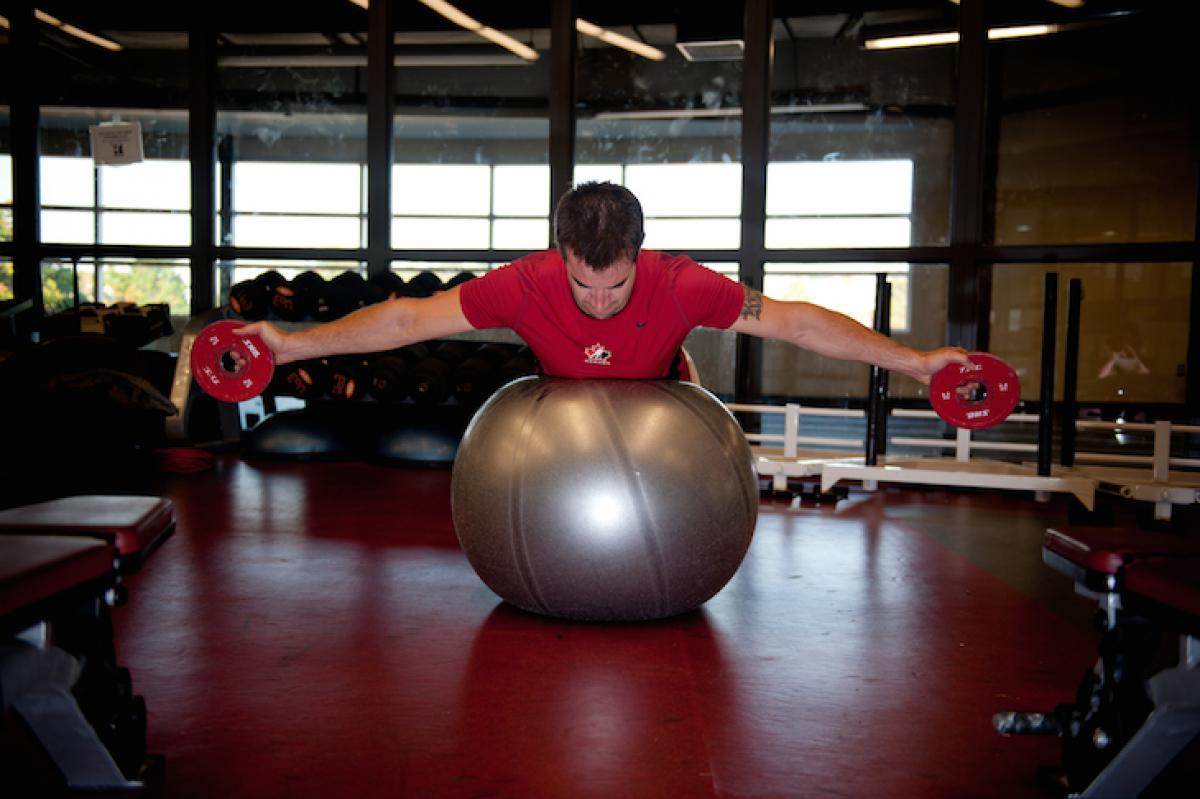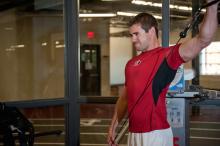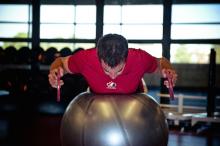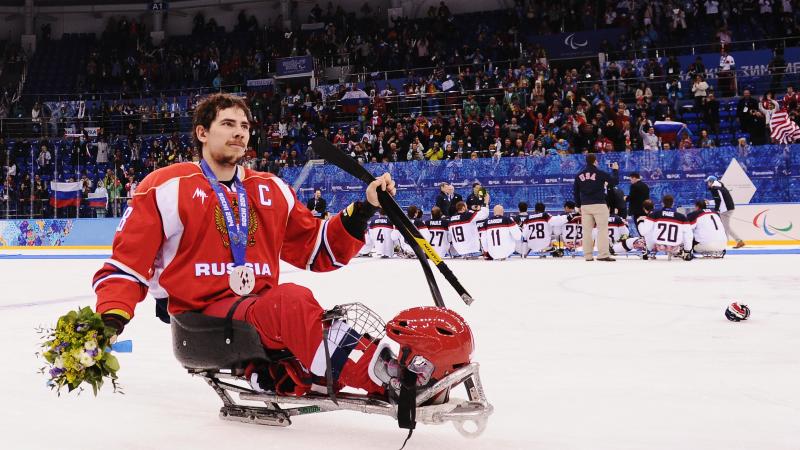Kevin Rempel: Training with a purpose
The Canadian ice sledge hockey Paralympic bronze medallist shares some of his latest training tips for the next Paralympic cycle. 14 May 2014
Kevin Rempel has targeted his gym training to help him become a better ice sledge hockey player, incorporating a stability ball into his latest workouts.
“I’m not lifting weights to become a body builder. I’m lifting weights to become a better fighter.”
“I’m not lifting weights to become a body builder. I’m lifting weights to become a better fighter.”
Those were some words I heard a few years ago while watching a documentary on MMA fighter, Forrest Griffin. It struck a chord for me so well that it impacted my training for years to come as I tried to be the best ice sledge hockey player I could.
You can take that statement and transfer it to any sport you are competing in or training for. The same rule applies – train with a purpose.
When you’re in the gym or out exercising, maybe going for a run, it can be very easy to get caught up comparing yourself to someone else. Maybe your buddy might have a bigger chest. The guy next to you can do 20 more pounds of dumbbell curls. Your girlfriend can run 15km and you can only run 5km.
When I was training on my own, I didn’t know what I was doing and would hit the gym just lifting and lifting, trying to get bigger with all the big muscle groups. I knew getting bigger was a good thing, but I didn’t really know where I was headed.
As I progressed, I started to develop some problems. My left shoulder started hurting, and soon later it was my back. And although I was getting bigger, I was really imbalanced in size from my left to right side.
It became clear that I had to get some expert advice and start targeting my training as a sledge hockey player, not just a guy who lifts weights.
My trainer at the time, Jeremy Steinbach, got me started with some very basic exercises to work on my shoulders. In sledge hockey, these take the most beating out of anything in our sport.
The related images illustrate two exercises where I focus on my trapezius and rhomboid muscles, the smaller muscles in your back that keep your shoulder blades stabilised.
Starting without any weight, I lay on a bench or stability ball, and while keeping my shoulders down and back, squeeze my shoulder blades together for eight reps. I do this with my arms in three different positions – in the shape of a “W,” “T,” and “L.” Typically, two sets suffice.
Another key exercise was what we called “High – Lows” and “Low – Highs.” On a cable machine you do each arm individually.
On “Low – Highs,” you raise your arm up and across the front of your body while keeping your shoulder down and back. I do about eight reps per arm and then switch. On “High – Lows” it is the same idea, but you are pulling from the top to the bottom, down across the front of your body. I do eight reps there as well. Typically two sets.
These exercises are fundamental for me and were a necessity to having a healthy four-year Paralympic cycle.
Without getting into too much detail of a training programme here, my aim is to illustrate a few key elements of training as an athlete:
1. Hire a trainer and get a programme designed specifically for you.
I know for some paying a trainer year round might not be a possible option. I do feel however that their knowledge is necessary to help you get dialed in on what you need to be your best. There are so many different ways to train. It is to your advantage that you seek out help from an expert to have direction in your training. This will help you reach your goals faster.
2. Start with the fundamentals, and build from that.
When I came to Jeremy I was relatively strong but the shoulder issues I was having hindered my performance. I could never give 100 per cent on the ice because I was always hurting. Jeremy forced me to step back and get my shoulder in line first before we ever tried to build more strength. Get your body in order and work on your weaknesses first. When you are healthy and strong in muscle stability, balance, and control, you will be able to push harder and make those gains faster like you want.
3. Stay focused on your goals, not someone else’s.
Don’t look at other around you and compare yourself to them. Look at yourself – where you are now and where you want to be. A strong-minded athlete knows that the process to becoming a champion is a long journey. When you start out things might be slow and it might be tough when others around you are ahead of you. Use that as motivation. Everyone has an individual journey.
If you want to reach a high level in your sport, it’s important to remember, to train with a purpose.

 Facebook
Facebook
 Instagram
Instagram
 Twitter
Twitter
 Youtube
Youtube








